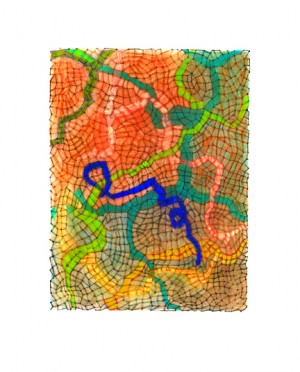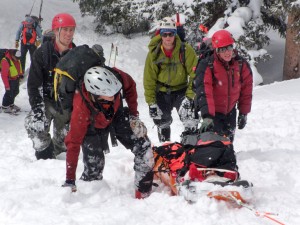by Susan Tweit
Last week, as Richard and I drove to Denver, I spotted a flock of dark birds with slender necks and skinny, red legs, probing energetically at the soil along a meandering creek.
“White-faced ibises!” I cried, pointing at the birds. Richard spotted them and grinned.
If you’ve never seen a white-faced ibis, imagine a dark, crow-sized shorebird with the iridescent sheen of a starling, standing on long legs and sporting a scimitar-like bill. Look for them in marshes, wet meadows, or flooded hayfields.
Ibises are flock birds: they fly in lines or Vs like small cranes, with slender necks extended and legs trailing. Their pointed wings are distinctive, flapping in synchrony.
From a distance, white-faced ibises look black. But catch a glimpse of their plumage in sunlight or through binoculars, and they shimmer with almost surreal coppery-brown iridescence, magenta highlights, and metallic purple-green wings.
A narrow white outline at the base of that long, down-curving curving bill gives them their common name, but is heckishly difficult to see.
In ancient Egypt, paintings of a related ibis species decorated Pharoah’s tombs as symbols of the god of wisdom and learning. Here in the Upper Arkansas River Valley, they are symbols of spring.
Flocks of these unusual birds wing into our valley on their way to summer nesting habitat in marshes as far away as southern Alberta. The first few usually arrive in mid-April, and they stay at least through Mother’s Day.
I don’t know of any other place in the area where white-faced ibises are such regular and conspicuous visitors. These avian commuters spend several weeks here, feeding and resting in hayfields, marshy areas, and wet meadows.
While in residence, they carbo-load, chowing down on soil-dwelling invertebrates – critters without backbones – including earthworms, grubs that munch grass roots, grasshopper nymphs, and other insect larvae. Their migration-fueled appetites provide timely natural pest control, coinciding with the spring explosion in populations of soil-dwelling, plant-munching critters.
Once the ibises have ingested sufficient calories in grubs and nymphs, flocks wing on their way, headed north for cattail and bulrush marshes where they pair up and nest.
Come fall, they’ll wing south to winter habitat in Mexico. With young in tow, their stops are brief, and they soon fly on, pointed wings beating in time, their slender necks, down-curved beaks, and legs outstretched.
We don’t yet appreciate the values that white-faced ibises contribute to our landscapes: we drain the wetlands that sustain their visits and drench the soil with pesticides, unknowingly killing the food that sustains these unique partners.
When I spot the first white-faced ibises in late April, I am reassured. And I think how fortunate we are that these iridescent avian commuters grace our valley.
Perhaps we will learn to celebrate their annual arrival, as we learn to celebrate all of the species whose comings and goings make this high-desert valley into a place we love.
Copyright 2010 Susan J. Tweit Award-winning writer Susan J. Tweit is the author of 12 books, and can be contacted through her web site, susanjtweit.com or her blog, susanjtweit.typepad.com/walkingnaturehome


